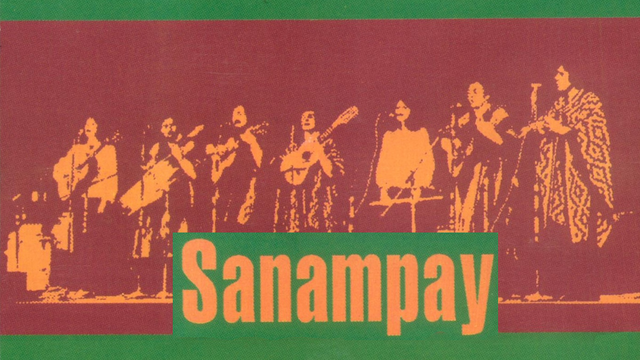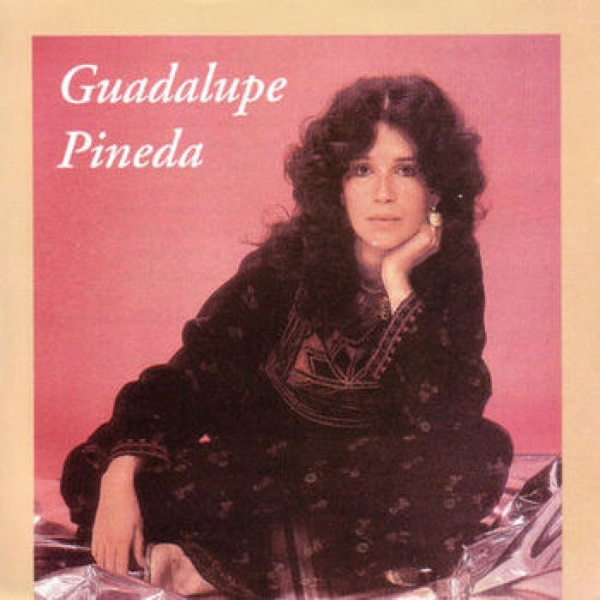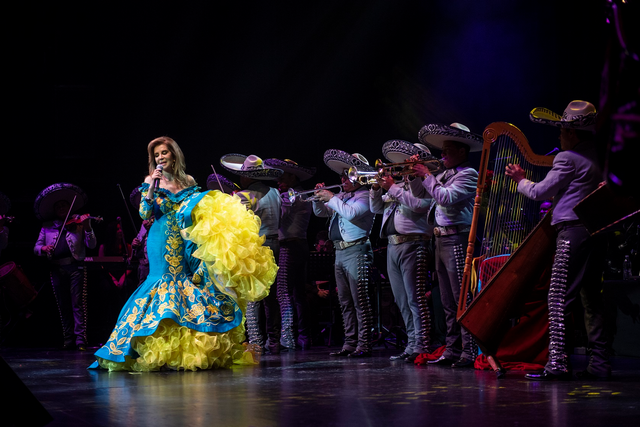Guadalupe Pineda & Sanampay #MyMusic [English -Español - Deutsch]
In 1978 I went to Mexico because there was the possibility to study there at the National Institute of Fine Arts, with the additional ease that my sister was already living in that country for a couple of years.
Thanks to the activity as a singer that my sister, Hely Orsini, developed there, she was already known in the environment of the Nueva Canción and was regularly invited to events and concerts of this type, in which she always coincided with artists such as Silvio Rodríguez, Pablo Milanés, Alfredo Zitarrosa, Daniel Viglieti, the brothers Luis Enrique and Carlos Mejía Godoy, Quilapayún, Inti Illimani and the Mexicans Gabino Palomares, Amparo Ochoa, among many others.
Versión en español más abajo
Deutsche Version weiter unten
Of course, I was the first spectator in all those events and I had the opportunity to meet many of them, apart from those I had already known for our 7-year stay in Europe.
At that time a group formed by some Argentines in exile and Mexicans began to sound a lot in Mexico. It was a group with a very interesting proposal, because its objective was to spread the New Latin American Song, but due to the academic training of some of its members, they achieved a very novel and interesting type of fusion. The name of the group: Sanampay, which the members said, it meant warning or being present in Quechua. Although they jokingly always added that they also liked it because in English it meant "Sun and Pie" (because of the Spanish pronunciation).

This new group obtained immediate success and began to revolve throughout the Mexican territory and other countries. They became a fixed participant in all kinds of cultural, solidarity and socio-political events.
But without a doubt, one of the characteristics that contributed to the success of the group was a 23-year-old girl, with a sublime beauty and an angelic timbre voice, with an impressive tuning and a touching sensibility. That girl's name was Guadalupe Pineda.
With that beauty, the appearance of a young rebel, an abundant hair, her clothes based on huipiles (own dress of the indigenous and mestizos of the south of Mexico and Central America), she turned out to me as comming out of a dream and therefore , I became a fan of Sanampay.
The song that reached my soul and used to put me some tears, was "Cautivo de Til Til" (Captive of Til Til), a composition of the Chilean Patricio Manns, but another one that left its mark on me was "Jacinto Cenobio" by Francisco Madrigal. This theme, in fact, remains today, one of the songs that Guadalupe is asked for and which she has sung countless times.
That crush, as one might expect from a boy 5 years younger than her, I never confessed and there was only one poem that I published a couple of days ago: Como en la flor, la primavera (As in the flower, spring) Oh, Spanish only, I'm sorry, but there is always Google Translate.
Sanampay's career continued to rise and the following year they recorded an album that was a work of art, a cantata that was titled "Terrestrial Coral", with the participation, as author, of the Argentine poet Armando Tejada Gómez.
Although the Sanampay group is still active today, under the direction of its director and founder Naldo Labrín, that was the last one in which Guadalupe participated, who began her career as a soloist.
In the same spirit of the New Song, Guadalupe began to break through and a couple of years later, her album “Te amo" (I love you) (in reference to the song “Yolanda” by Pablo Milanés, included in the album), managed to sell a million and a half copies. That was the definitive trigger in the career of this girl born in Guadalajara and that over the years has become one of the top stars of the northern country.
With more than 30 solo albums, multiple Latin Grammy nominations, from whom she received the Excellence Award as a special recognition for her outstanding career, she crossed the borders and became a musical ambassador for her land.
And of course she is also part of #MyMusic!
Music at the end of this post!

Source - Fuente - Quelle

Español
En el año 1978 me fui a México porque había la posibilidad de que yo estudiara allá en el Instituto Nacional de Bellas Artes, con la facilidad adicional de que mi hermana ya tenía un par de años viviendo en ese país.
Gracias a la actividad de cantante que mi hermana, Hely Orsini, había desarrollado, ya era conocida en el ambiente de la Nueva Canción y era invitada regular a eventos y conciertos de este tipo, en el cual coincidía siempre con artistas de la talla de Silvio Rodríguez, Pablo Milanés, Alfredo Zitarrosa, Daniel Viglieti, los hermanos Luis Enrique y Carlos Mejía Godoy, Quilapayún, Inti Illimani y los mexicanos Gabino Palomares, Amparo Ochoa, entre muchos otros.
Por supuesto, yo era el primer espectador en todos esos eventos y tuve la oportunidad de conocer a muchos de ellos, aparte de los que ya había conocido por nuestra estancia de 7 años en Europa.
En esa época empezó a sonar mucho en México un grupo formado por algunos argentinos en el exilio y mexicanos. Era una agrupación con una propuesta muy interesante, porque su objetivo era difundir la Nueva Canción Latinoamericana, pero debido a la formación académica de algunos de sus integrantes, lograron un tipo de fusión muy novedosa e interesante. El nombre del grupo: Sanampay, que según contaban los integrantes, quechua significaba avisar o estar presente. Aunque en broma siempre agregaban que también les gustaba porque en inglés significaba “sol y torta” (sun and pie).
Esta novel agrupación obtuvo un éxito inmediato y comenzó a girar por todo el territorio mexicano y otros países. Se convirtió en participante fijo en todo tipo de evento cultural, de solidaridad y de carácter socio político.
Pero sin duda, una de las características que contribuyó al éxito del grupo era una muchacha de 23 años, con una belleza sublime y una voz de timbre angelical, con una afinación impresionante y una sensibilidad conmovedora. El nombre de aquella muchacha era Guadalupe Pineda.

Source - Fuente - Quelle
Con aquella belleza, aspecto de joven rebelde, una abundante cabellera, su vestimenta basada en huipiles (Vestimenta propia de los indígenas y mestizos de la parte del sur de México y Centroamérica), ella me resultaba a mí como salida de un sueño y por ende, me convertí en fan de Sanampay.
La canción que me llegaba hasta el alma y solía arrancarme alguna que otra lágrima, era “Cautivo de Til Til”, una composición del chileno Patricio Manns, pero otra de las que dejó huella en mí fue “Jacinto Cenobio” de Francisco Madrigal. Este tema, de hecho, sigue siendo hoy en día, una de las canciones que le solicitan a Guadalupe y la cual ha cantado innumerables veces.
Ese enamoramiento, como podía esperarse de un muchacho 5 años menor que ella, nunca se lo confesé y de allí solo quedó un poema que publiqué hace un par de días: Como en la flor, la primavera.
La carrera de Sanampay siguió en ascenso y al año siguiente grabaron un disco que fue toda una obra de arte, una cantata que llevó por título “Coral Terrestre”, con la participación, como autor, del poeta argentino Armando Tejada Gómez.
Aunque el grupo Sanampay sigue activo hoy en día, bajo la dirección de su director y fundador Naldo Labrín, ese fue el último en el que participó Guadalupe, quien a aprtir de ese momento empezó su carrera como solista.
En el mismo espíritu de la Nueva Canción, Guadalupe empezó a abrirse camino y un par de años más tarde, su disco “Te amo” (en referencia a la canción “Yolanda” de Pablo Milanés, incluida en el álbum), logra vender un millón y medio de copias. Ese fue el disparador definitivo en la carrera de esta muchacha nacida en Guadalajara y que con el pasar de los años se ha convertido en una de máximas estrellas del país norteño.
Con más de 30 discos como solista, múltiples nominaciones al Grammy Latino, de quienes recibió el Premio a la Excelencia como reconocimiento especial por su destacada trayectoria, cruzó las fronteras y se convirtió en embajadora musical de su tierra.
¡Y, por supuesto, ella también es parte de #MyMusic!
¡Música al final de esta publicación!

Source - Fuente - Quelle

Deutsch
1978 zog ich nach Mexiko um, weil es die Möglichkeit gab, dort am Nationalen Institut der schönen Künste zu studieren, mit der zusätzlichen Erleichterung, dass meine Schwester bereits einige Jahre in diesem Land lebte.
Dank der Tätigkeit als Sängerin, die meine Schwester, Hely Orsini, dort entwickelte, war sie bereits im Umfeld der Nueva Canción bekannt und wurde regelmäßig zu Veranstaltungen und Konzerte dieser Art eingeladen, bei denen sie stets mit Künstlern wie Silvio Rodríguez, Pablo Milanés, Alfredo Zitarrosa, Daniel Viglieti, den Brüdern Luis Enrique und Carlos Mejía Godoy, Quilapayún, Inti Illimani und den Mexikanern Gabino Palomares, Amparo Ochoa zusammentraf, unter vielen anderen zusammenkamm.
Natürlich war ich der erste Zuschauer bei all diesen Veranstaltungen und ich hatte die Gelegenheit, viele von ihnen zu treffen, abgesehen von denen, die ich bereits für unseren siebenjährigen Aufenthalt in Europa kannte.
Zu dieser Zeit begann eine Gruppe, die sich aus einigen Argentiniern im Exil und Mexikanern zusammensetzte, in Mexiko viel zu klingen. Es war eine Gruppe mit einem sehr interessanten Vorschlag, da ihr Ziel darin bestand, das Neue Lateinamerikanische Lied zu verbreiten, aber aufgrund der akademischen Ausbildung einiger ihrer Mitglieder gelang ihnen eine sehr neuartige und interessante Art der Fusion. Der Name der Gruppe: Sanampay, von den die Mitglieder sagten, bedeutete Warnung oder Anwesenheit in Quechua. Obwohl sie scherzhaft immer hinzufügten, dass sie es auch mochten, weil es auf Englisch "Sonne und Kuchen" (Sun and Pie) bedeutete (wegen der spanischen Aussprache).
Diese neue Gruppe hatte sofort Erfolg und begann auf dem gesamten mexikanischen Territorium und in anderen Ländern aufzutreten. Sie wurden zu festen Teilnehmern an allen Arten von kulturellen, solidarischen und gesellschaftspolitischen Ereignissen.
Aber ohne Zweifel eines der Merkmaledie zum Erfolg der Gruppe beitrugen, war ein 23-jähriges Mädchen mit einer erhabenen Schönheit und einer engelhaften Timbre-Stimme, mit einer beeindruckenden Stimmung und einer berührenden Sensibilität. Der Name dieses Mädchens war Guadalupe Pineda.

Source - Fuente - Quelle
Mit dieser Schönheit, dem Auftritt einer jungen Rebellin, einem üppigen Haar, ihrer Kleidung aus Huipiles (eigene Kleidung der Ureinwohner und Mestizen des Südens Mexikos und Mittelamerikas) entpuppte sie sich für mich als aus einem Traum stammend und daher wurde ich ein Fan von Sanampay.
Das Lied, das meine Seele erreichte und mich zu Tränen rührte, war "Cautivo de Til Til" (Gefangener von Til Til), eine Komposition der chilenischen Patricio Manns, aber ein anderes, das mich geprägt hat, war "Jacinto Cenobio". von Francisco Madrigal. Dieses Thema ist bis heute eines der Lieder, nach denen Guadalupe gefragt ist und die sie unzählige Male gesungen hat.
Diese Verliebtheit, wie man es von einem Burschen erwarten kann der 5 Jahre jünger als sie war , habe ich nie gestanden und es gab nur ein Gedicht, das ich vor ein paar Tagen veröffentlicht habe: Como en la flor, la primavera (Wie in der Blüte, der Frühling) Oh, nur Spanisch, es tut mir leid, aber es gibt immer Google Translate.
Sanampays Karriere nahm weiter zu und im folgenden Jahr nahmen sie ein Album mit dem Titel "Coral Terrestre" (Erdkoralle) auf, an dem der argentinische Dichter Armando Tejada Gómez als Autor teilnahm.
Obwohl die Sanampay-Gruppe noch heute unter der Leitung ihres Direktors und Gründers Naldo Labrín aktiv ist, war dies die letzte, an der Guadalupe teilnahm, die ihre Karriere als Solistin begann.
Im gleichen Geiste des Neuen Liedes begann Guadalupe sich durchzusetzen und einige Jahre später erschien ihr Album "Te amo" (Ich hab dich lieb) (in Anlehnung an das Lied "Yolanda" von Pablo Milanés, das im Album enthalten war). Das war der entscheidende Auslöser für die Karriere des in Guadalajara geborenen Mädchens, das im Laufe der Jahre zu einem der Topstars des nördlichen Landes geworden ist.
Mit mehr als 30 Soloalben und mehreren Latin Grammy-Nominierungen, von denen sie den Qualitätspreis als besondere Anerkennung für ihre herausragende Karriere erhielt, überquerte sie die Grenzen und wurde musikalische Botschafterin für ihr Land.
Und natürlich is sie auch Teil von #MyMusic!

Music – Música – Musik
Cautivo de Titl Til – Sanampay
Jacinto Senobio – Sanampay
Yolanda (Te amo) – Guadalupe Pineda
Coincidir (Live) – Guadalupe Pineda
Granada (Live) – Guadalupe Pineda
# This post was created for the #mymusic tag. Read more!
# Esta publicación fue creada para la etiqueta #mymusic. ¡Leer más!
# Dieser Beitrag wurde für den Tag #mymusic geschrieben. Weiter lesen!


@ylich
http://ylich.com
https://sptfy.com/ylich
Posted from my blog with SteemPress : http://ylich.com/blog/guadalupe-pineda-sanampay-mymusic-english-espanol-deutsch/
Guten Tag,
Mein Name ist GermanBot und du hast von mir ein Upvote erhalten. Als UpvoteBot möchte ich dich und dein sehr schönen Beitrag unterstützen. Jeden Tag erscheint ein Voting Report um 19 Uhr, in dem dein Beitrag mit aufgelistet wird. In dem Voting Report kannst du auch vieles von mir erfahren, auch werden meine Unterstützer mit erwähnt. Schau mal bei mir vorbei, hier die Votings Reports. Mach weiter so, denn ich schaue öfter bei dir vorbei.
Euer GermanBot
Vielen Dank!
Have a nice day, @ylich.Your post was selected to win some extra TLNT tokens, powered by The Talent Club.That means you got talent!Enjoy it!Thank you very much! ;-)
Alles richtig gemacht, weiter viel Erfolg...
Du hast ein kleines Upvote vom German-Steem-Bootcamp erhalten.
Du findest uns im Discord unter https://discord.gg/HVh2X9B
Aktueller Kurator ist @don-thomas
N E U - jeden Donnerstag findet bei uns ab 19 Uhr die Quasselstunde statt wo du nicht nur mit uns reden kannst - es werden auch tolle Preise verlost
Du möchtest keine Upvotes (mehr) von uns erhalten? Eine kurze Mittelung unter diesen Kommentar reicht.
Dem Upvote von uns folgt ein Trail der weitere Upvotes von unseren Unterstützern beinhaltet. Hier kannst du sehen wer diese sind und auch erfahren wie auch du uns und somit die deutschsprachige Community unterstützen kannst.
Sehr bedankt mein lieber Freund @don-thomas und liebe Freundo von @steem-bootcamp!!!
Die Quasselstunde ist um 19 Uhr in welcher Zeitzone?